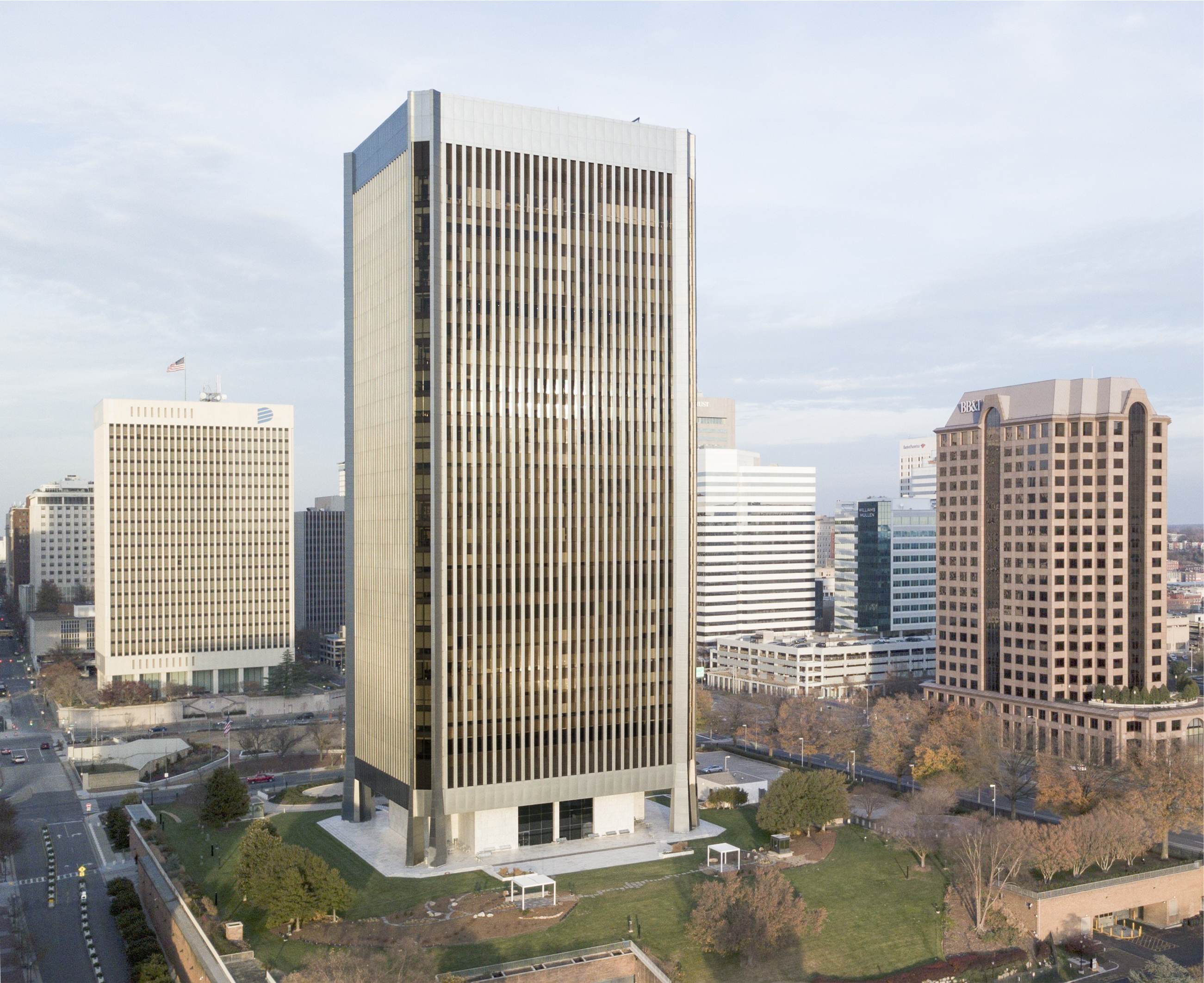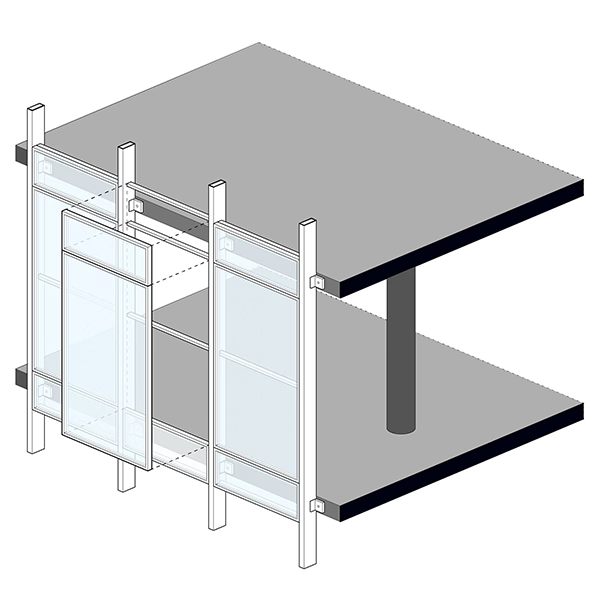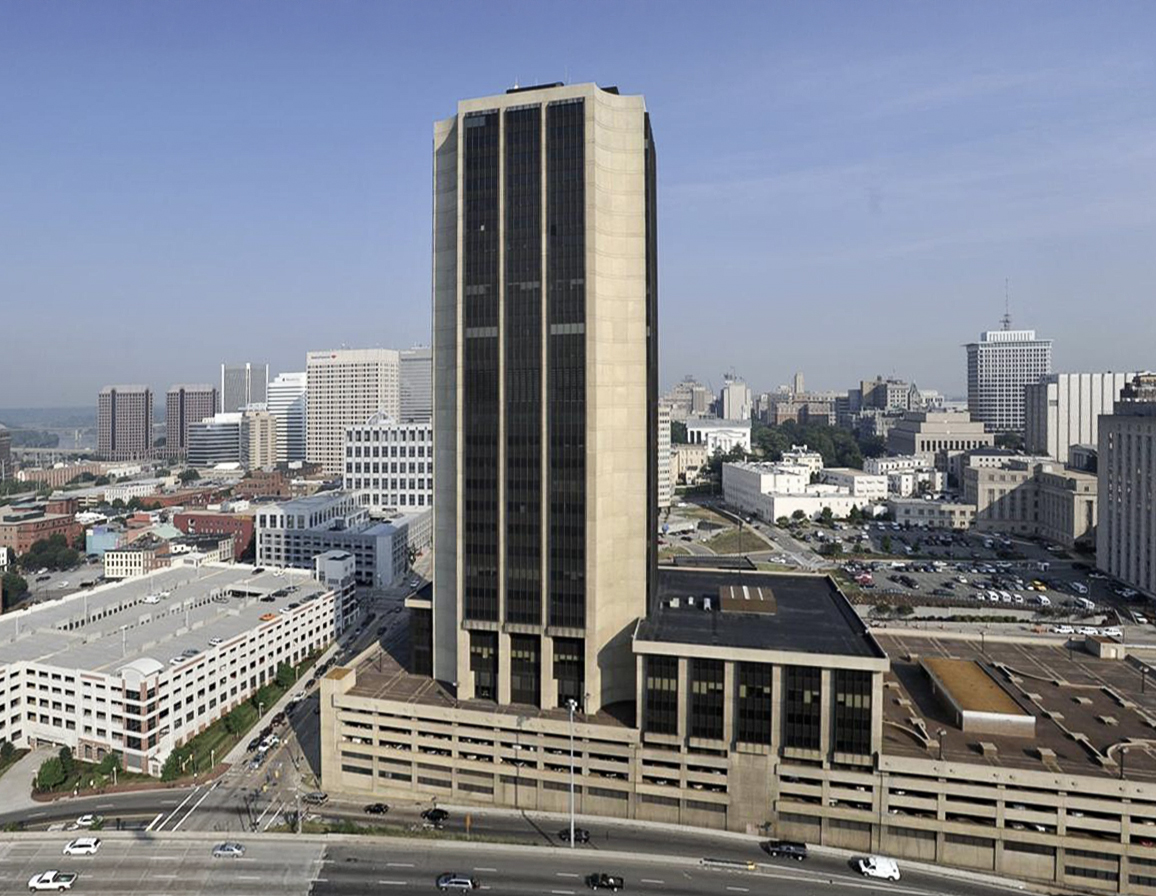The Federal Reserve Bank of Richmond Building is an International Style skyscraper designed in 1972 by Minoru Yamasaki, and built between 1975 and 1978, for a reported $30.0 million dollars, in Richmond, VA.
Its precise street address is 701 East Byrd Street, Richmond, VA. You can also find it on the map here.
The building's facade bears a resemblance to the Twin Towers of New York, which were also designed by architect Minoru Yamasaki. In both projects, the architect emphasizes the building's verticality through narrow bays that organize the facade. However, even though the aesthetics might be similar, the structural solution is different in both projects..



